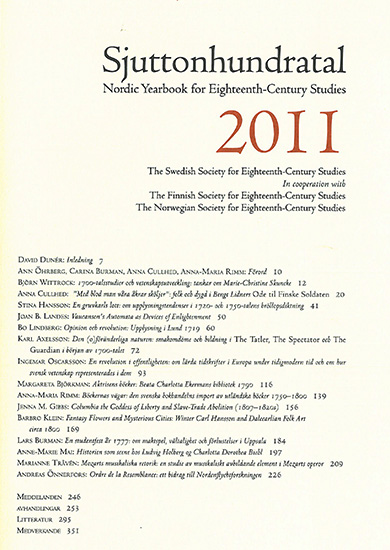En revolution i offentligheten: om lärda tidskrifter i Europa under tidigmodern tid och om hur svensk vetenskap representerades i dem
DOI:
https://doi.org/10.7557/4.2397Keywords:
scientific periodicals, republic of letters, Acta literaria Sueciæ, HandlingarAbstract
The birth and rapid progress of scientific periodicals during the closing decades of the seventeenth century was a process that entailed new challenges for scholars and had many implications for the relations between the republic of letters and society as a whole. From this point forward, stronger demands were placed upon scholars to publicly account for their findings, as well as to improve their ability to communicate their research to a general audience. Inherent in this process was the gradual development of a new genre, the modern scientific article, together with spin-off forms like reviews, summaries, and abstracts. In Sweden, the quarterly Acta literaria Sueciæ (Uppsala, 1720-1729) was pioneering in its ambition to give Swedish scholarship a more conspicuous place in the learned world than it had been bestowed in foreign journals. In this the Latin Acta did experience some success, but a more comprehensive breakthrough for Swedish learning in the European media came during the next few decades, reflecting the country's prosperity in the natural sciences. Of vital importance for this breakthrough was, beginning in 1739, the quarterly Handlingar (written in the vernacular) of the Royal Swedish Academy of Sciences, which was extensively translated and reviewed abroad. In the francophone sphere, however, its reception lagged in comparison to what was the case in the German area, and in the renowned Journal des savants, the Swedish journal was practically disregarded for many years. Then, in the 1770s and 1780s, it unexpectedly became the subject of a rather intense series of reviews composed by French intermediaries who took pains to learn Swedish. The article concludes with several examples of their techniques for transmitting the contents of Handlingar through the use of summaries, paraphrases, and translations.









